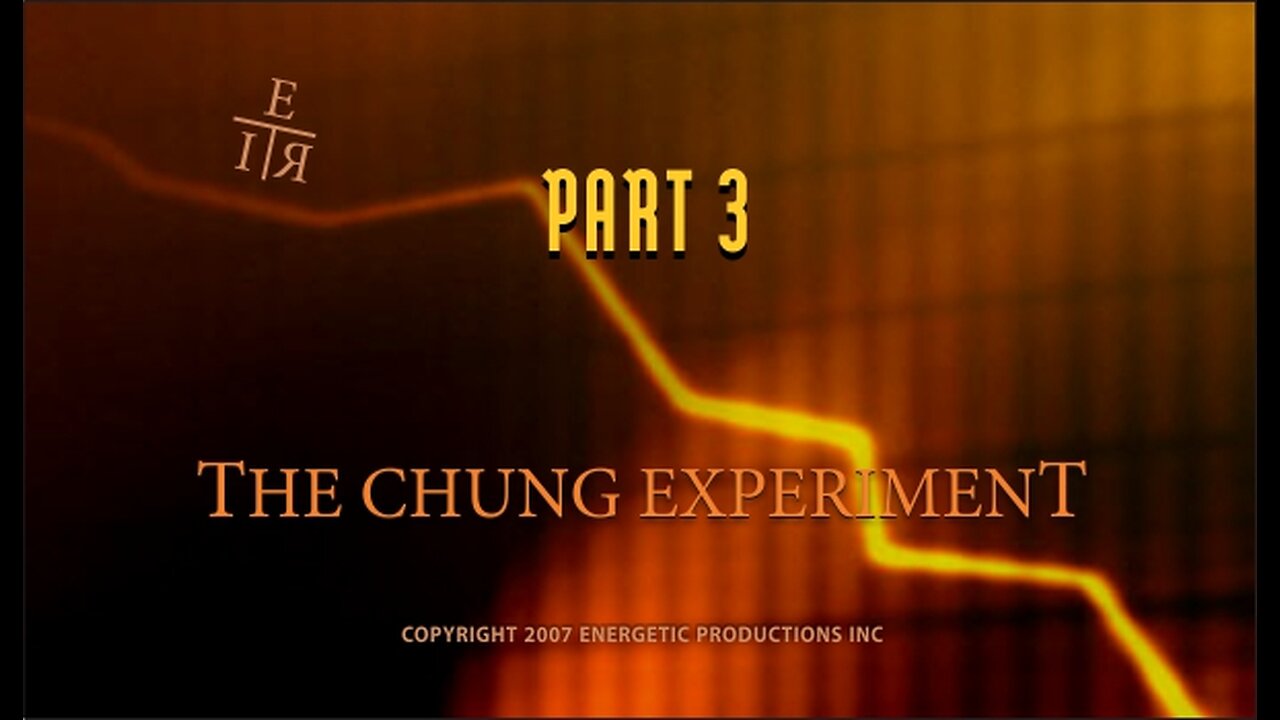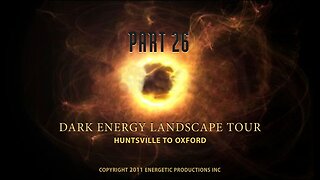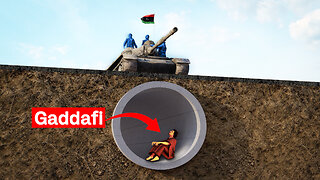Premium Only Content

Energy From The Vacuum 03 - The Chung Experiment (2007)
In a July 9, 1998 keynote address at the Fifth International Conference on Composites Engineering in Las Vegas, Dr. Deborah D. L. Chung, professor of Mechanical and Aerospace Engineering at University at Buffalo (UB), reported that she had observed apparent negative resistance in interfaces between layers of carbon fibers in a composite material. Professor Chung holds the Niagara Mohawk Chair in Materials Research at UB and is internationally recognized for her work in smart materials and carbon composites. The apparent negative resistance was observed in a direction perpendicular to the fiber layers.
A paper describing the research was published by Chung in a peer-reviewed journal, and a patent application was filed by the University.
Several negative articles appeared quickly in the popular scientific press. Conventional scientists were quickly quoted as proclaiming that negative resistance was against the laws of physics and thermodynamics. Others thought perhaps the UB researchers had made a little battery and were unaware of it.
Professor Chung, who has a Doctorate from Massachusetts Institute of Technology, is the leading “smart materials” scientist in this country, and a scientist of international reputation. Her team tested the negative resistance effect thoroughly for a year in thelaboratory. If there is a team in this country anywhere qualified to test a negative resistance effect in carbon materials, it is Professor Chung and her team at UB.
In an Energetic Productions LLC exclusive, Professor Chung discusses on camera for the first time how this invention works, and she demonstrates its performance under various conditions with co-inventor Dr. Shoukai Wang. In addition, she candidly answers questions posed to her by the interviewers.
Later on in the film we also get to learn a bit more about Deborah Chung, the person, one of the first four women to graduate from California Institute of Technology.
Part 3 in the Series poses some interesting questions, which may well be related to new concepts presented in Parts 1 and 2. It is also extremely fertile ground for experimenters, as the construction of the invention is easily reproducible.
-
 2:11:55
2:11:55
Lt. Col. Thomas Bearden Files
1 year agoEnergy From The Vacuum 26 - Dark Energy Landscape Tour - Oxford to Huntsville (2011)
546 -
 8:42
8:42
Freedom Frontline
13 hours agoDurbin’s Trump Smear Video Just HUMILIATED Him in the Senate
3.62K -
 10:56
10:56
ariellescarcella
11 hours agoThe Shocking Divide Among College Voters Sparks Worry For America
2.66K5 -
 13:09
13:09
Forrest Galante
9 hours agoWildlife Expert Reacts To Deadly Australian Animal TikToks
47K4 -
 12:08
12:08
Zoufry
1 day agoThe Mystery of Gaddafi's Final 24 Hours
8.67K7 -
 18:25
18:25
Liberty Hangout
13 days agoAnti-Ice Demonstrators Love Poop!
44.4K64 -
 9:39
9:39
MattMorseTV
16 hours ago $1.05 earnedVance just DROPPED a BOMBSHELL.
40.2K63 -
 23:47
23:47
GritsGG
1 day agoThe Forgotten Best Sniper Support AR!
15.5K3 -
 1:15:48
1:15:48
The Pascal Show
17 hours ago $0.10 earnedMUGSHOTS RELEASED! Emmanuel Haro's Parents Mugshot Released To The Public
12.2K1 -
 14:45
14:45
BlabberingCollector
20 hours agoKings Cross Station SET LEAKS! | Harry Potter HBO Show Update & News
11.8K1